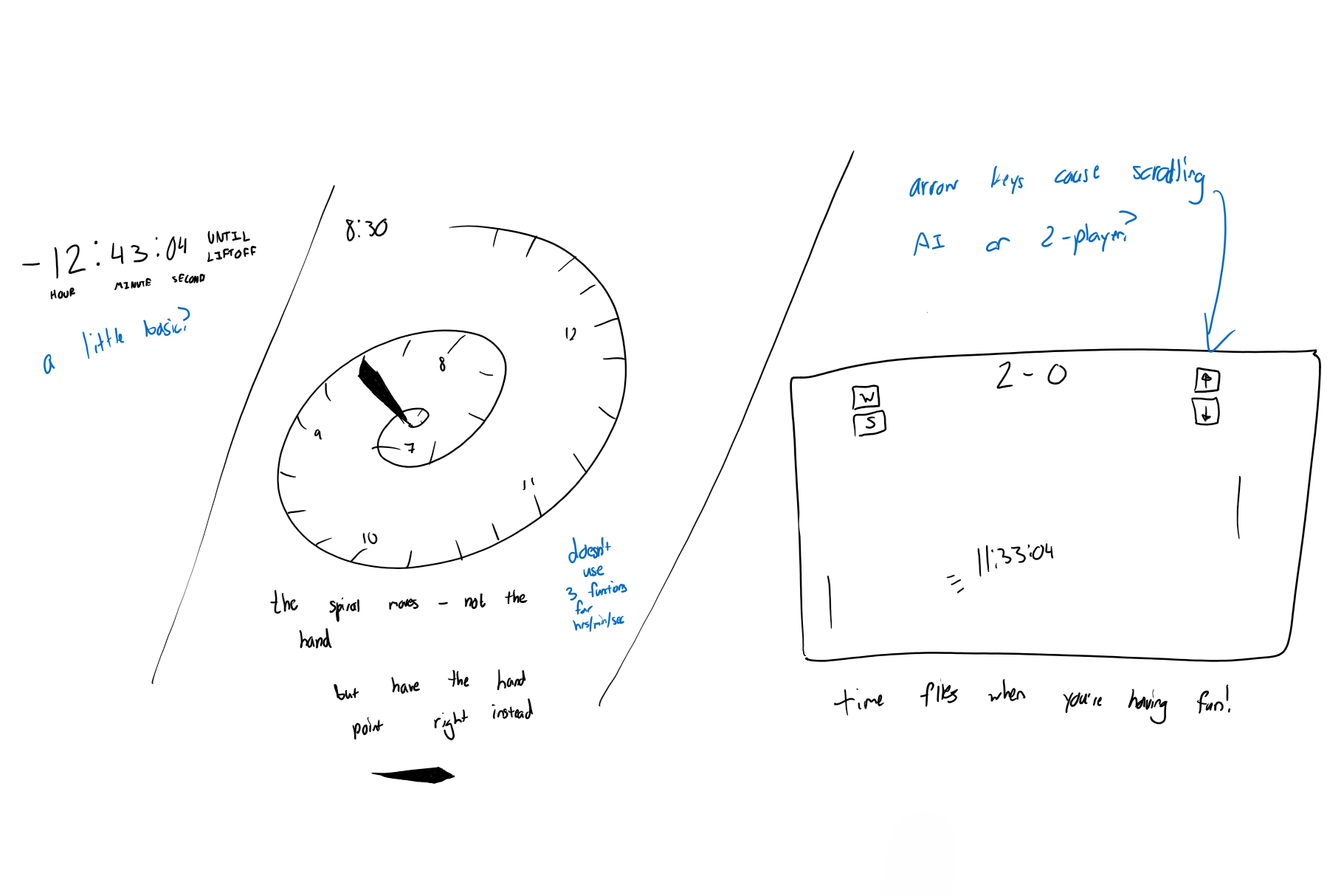CREATIVE BRIEF
P5.js Clock
“Computational science and, by proxy, web design have a unique history tethered to the users' system clock. Students will follow a formalized process from brainstorming and sketching to prototyping and construction to create a browser-based design that employs the system clock's 3 basic events (seconds, minutes, hours) using p5.js. Your ‘clock’ doesn't need to resemble a traditional clock, and may instead employ other functions that are triggered by these events.”

BRAINSTORMING
Initial Ideas
Before beginning to code, I brainstormed several ideas, including a simple liftoff clock, a spiraling clock to represent the sometimes-dreary forward march of time, and finally, a pong clock, in which the time is bounced around like the pong ball.I thought of the phrase “time flies when you're having fun“ right away - but I had not yet given it the mocking connotation that it carries in the final product, thinking instead about time (the clock) literally flying across the screen.
INTERACTIVITY
Game Modes
The pong clock has two modes, single-player and two-player. In single-player mode, the player controls the left paddle, while a computer player controls the right paddle. In two-player mode, one player controls each paddle.The lefthand player controls the paddle using the E and D keys, while the righthand player uses the I and K keys. Thus, the paddle can be comfortably controlled from the hand's resting position on the keyboard.
SYSTEM CLOCK
More Clock Than Game
In single-player mode, the computer player simply tracks the y-value of the clock. If the clock is traveling above a certain horizontal velocity, the computer player has a small chance of stalling and messing up. This means the player has no real strategy except to outlast the computer.In either mode, considering how slowly the clock usually moves, the player will have to sit through many slow volleys, especially on larger monitors. This forces the player to watch the seconds on the clock tick by. This is an intentional design choice that highlights the passage of time.Reinforcing this theme are the repeating messages at the end of each round, which grow more sinister with each passing game. With messages like “WHY SPEND YOUR TIME ON THIS?” and “TICK TOCK TICK TOCK,” the player must contend with whether they spend too much time on useless diversions.